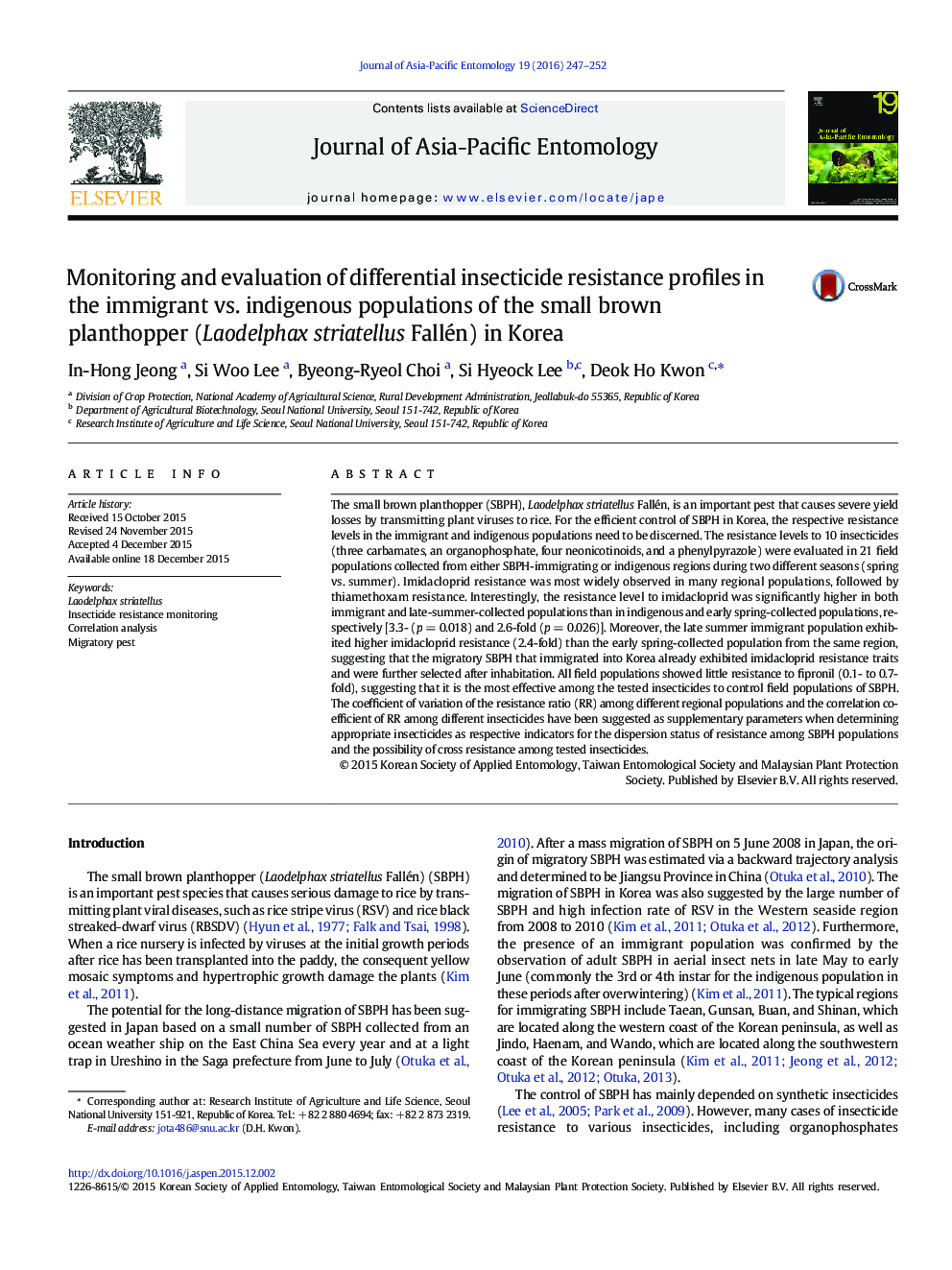| Article ID | Journal | Published Year | Pages | File Type |
|---|---|---|---|---|
| 6380268 | Journal of Asia-Pacific Entomology | 2016 | 6 Pages |
â¢Insecticide resistance monitoring is necessary to control the Laodelphax striatellus.â¢Most Korean populations exhibited wide range of resistance level except fipronil.â¢Late-summer immigrant population exhibited high level resistance in imidacloprid.â¢Seasonal effects were also found in insecticide resistance (summer > spring).â¢The immigrant population would influx into Korea possessing insecticide resistance traits.
The small brown planthopper (SBPH), Laodelphax striatellus Fallén, is an important pest that causes severe yield losses by transmitting plant viruses to rice. For the efficient control of SBPH in Korea, the respective resistance levels in the immigrant and indigenous populations need to be discerned. The resistance levels to 10 insecticides (three carbamates, an organophosphate, four neonicotinoids, and a phenylpyrazole) were evaluated in 21 field populations collected from either SBPH-immigrating or indigenous regions during two different seasons (spring vs. summer). Imidacloprid resistance was most widely observed in many regional populations, followed by thiamethoxam resistance. Interestingly, the resistance level to imidacloprid was significantly higher in both immigrant and late-summer-collected populations than in indigenous and early spring-collected populations, respectively [3.3- (p = 0.018) and 2.6-fold (p = 0.026)]. Moreover, the late summer immigrant population exhibited higher imidacloprid resistance (2.4-fold) than the early spring-collected population from the same region, suggesting that the migratory SBPH that immigrated into Korea already exhibited imidacloprid resistance traits and were further selected after inhabitation. All field populations showed little resistance to fipronil (0.1- to 0.7-fold), suggesting that it is the most effective among the tested insecticides to control field populations of SBPH. The coefficient of variation of the resistance ratio (RR) among different regional populations and the correlation coefficient of RR among different insecticides have been suggested as supplementary parameters when determining appropriate insecticides as respective indicators for the dispersion status of resistance among SBPH populations and the possibility of cross resistance among tested insecticides.
Graphical abstractDownload full-size image
